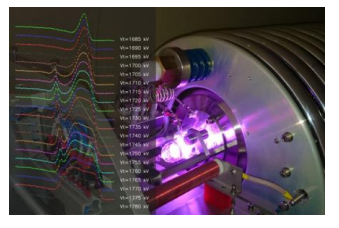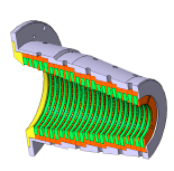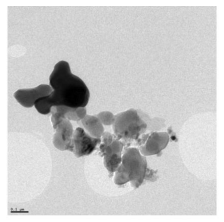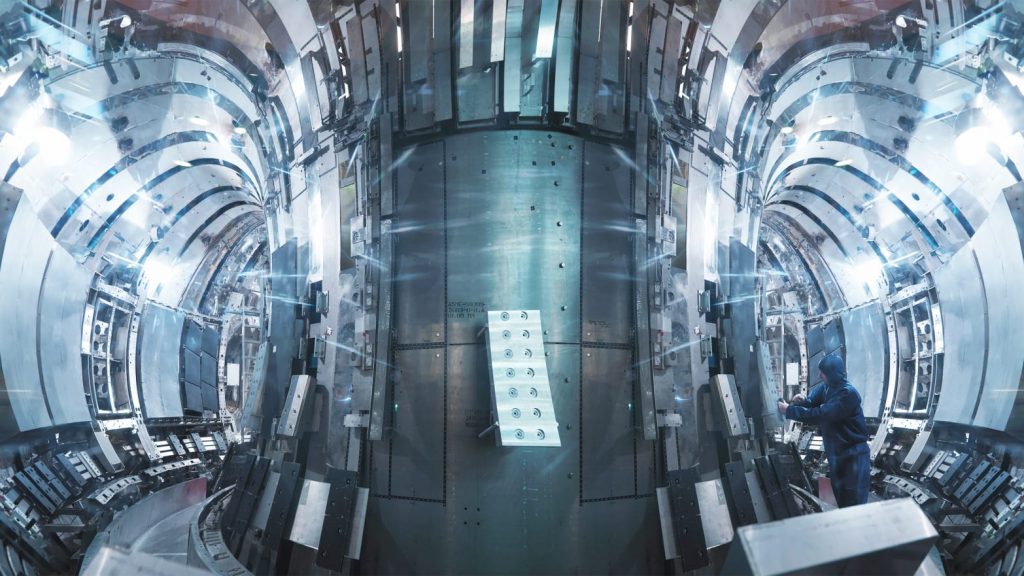
Technology nuggets and resources to drive your innovation
Boost your innovation with fusion tech
Solid-state microwave (2.45GHz) pulsed generator for plasma

LPSC developed an ECR dipolar plasma source, and a microwave generator powered by a steady state module. The Compact, highly versatile and robust/reliable device offered works on DC mode, or pulsed mode and presents several advantages, such as high stability over a wide range of experimental conditions while recreating a plasma-surface interaction very close to that obtained in a full-scale ion source. The technology is relevant for big science infrastructures to improve the understanding and knowledge about plasma chemistry or in any industry application requiring a smooth surface treatment.
Modular High-Field Superconducting Magnets with Demountable Joints

The development of modular high temperature superconducting magnets offers significant benefits to fusion by reducing the risk of failure while facilitating the maintenance and enabling the construction of very large complex components. University of Durham and CCFE have worked on the soldered joints which are essential components of this concept. This technology could open new possibilities in existing and promising applications of superconductivity such as : Magnets for Magnetic Resonance Imaging (MRI), Low and high field magnets for Nuclear Magnetic Resonance (NMR), low and high field magnets for physical sciences and research, Accelerators for high-energy physics, Industrial magnets for materials magnetic separation, Superconducting Sensors, Power Cables…
Ion Beam Accelerator and analysis

Connected to DIFFER’s unique facility Magnum-PSI (the only laboratory experiment in the world which can expose materials to the harsh plasma conditions near the walls of fusion reactors), Ion Beam facility provide an accelerator is a high beam-stability with low ripple and high beam-current. The accelerator is used for ion beam analysis (IBA) and ion-irradiation (for defect engineering). IBA is a none-destructive, quantitative, quick, and cheap method of elemental depth profiling. IBA and ion-irradiation can be applied to a plethora of cases; e.g. elemental depth profiling in areas such as fusion and fission, solar cells, semiconductors, optoelectronics, as well as archeology and cultural heritage, meteorology, forensic, geology, and biological sciences
Prevention of Parasitic Oscillations in Electron Beam Tubes

The innovation relates to a device for preventing parasitic oscillations in electron beam tubes. It comprises a beam tunnel subject to an axial static magnetic field. The tunnel is equipped with ceramic and metal rings arranged alternately in the axial direction. These rings yield a structure on the inner surface preventing the harmonic rise of spurious oscillations that could otherwise damage the tube. The technology is ready for use in the non-‐fusion domain and was patented by the inventors Manfred Thumm and Gerd Gantenbein.
Nanofluids For Improved Heat Transfer

Research is underway into the use of nanofluids to improve the cooling of surfaces within fusion reactors that are exposed to extreme heat fluxes. Nanofluids are a mixture of liquids (typically water) with nanoparticles (<100nm) in a concentration that is usually less than 1% by volume. Nanoparticles being investigated are alumina, ceramics, and carbon nanotubes, as these are known to increase both the conductive and convective heat transfer coefficients by up to half an order of magnitude (5x), and the critical heat flux of current coolants by up to an order of magnitude (10x) for boiling heat transfer. Due to this, cooling systems that are based on nanofluids could deliver a step‐change in the power handling performance of heat exchangers and other components.
You did not find a technology that met your demand? Share your need !






